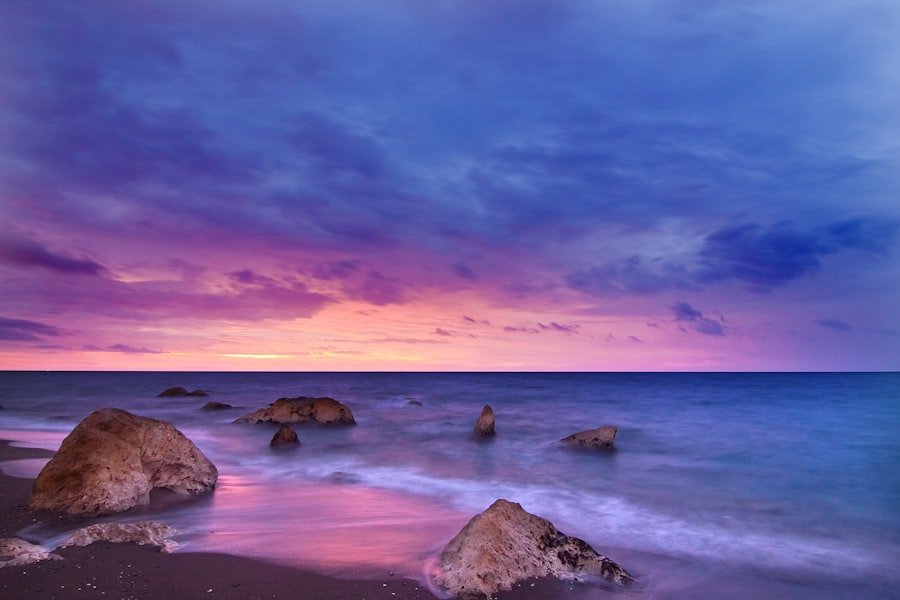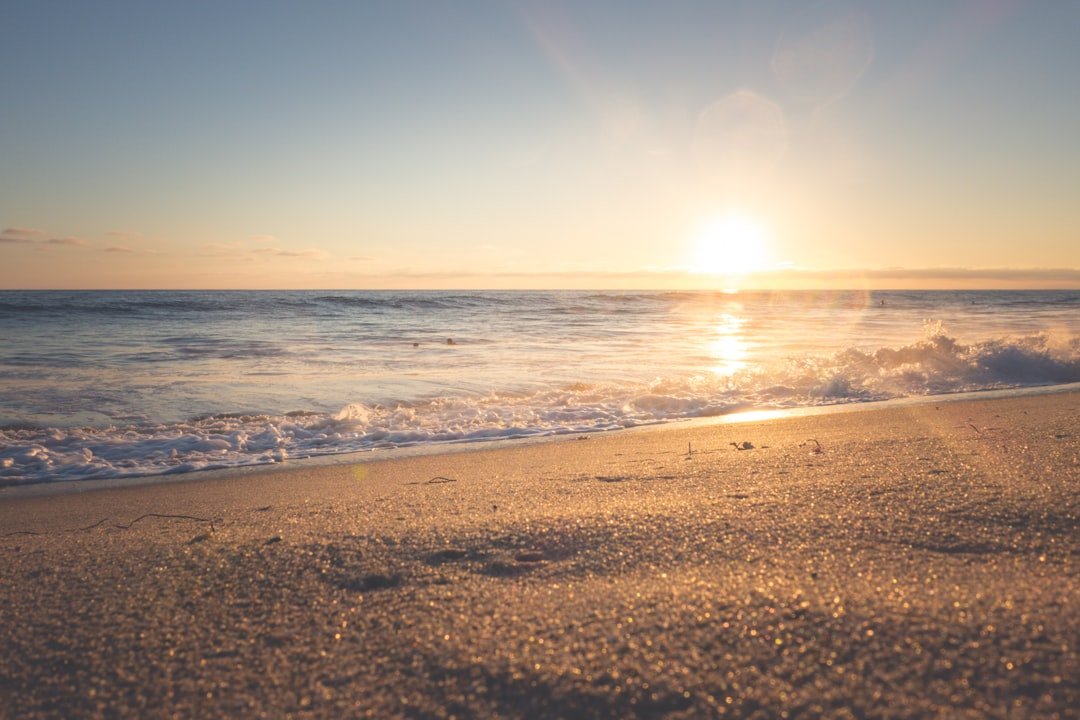Cabo San Lucas, located at the southern tip of the Baja California Peninsula in Mexico, is a popular tourist destination known for its beautiful beaches, vibrant nightlife, and stunning natural landscapes. The town is famous for its iconic rock formation, El Arco, which marks the spot where the Pacific Ocean meets the Sea of Cortez. Cabo San Lucas offers a wide range of activities for visitors, from water sports and whale watching to exploring the local culture and cuisine. The warm climate and inviting waters make it an ideal destination for those seeking a relaxing beach vacation or an adventurous getaway.
Cabo San Lucas is a paradise for outdoor enthusiasts, with its crystal-clear waters and abundant marine life. The town is also known for its lively marina, where visitors can charter boats for fishing excursions or take a sunset cruise along the coast. Whether you’re looking to relax on the beach, explore the underwater world through snorkeling and scuba diving, or try your hand at surfing or paddleboarding, Cabo San Lucas has something for everyone. With its diverse range of activities and attractions, it’s no wonder that Cabo San Lucas is a top destination for travelers seeking sun, sea, and adventure.
Exploring Cabo Adventures
Cabo San Lucas offers a wide array of adventures for visitors to explore. From thrilling water sports to serene beach activities, there’s something for everyone to enjoy. One of the most popular activities in Cabo is whale watching. Every year, from December to April, humpback whales migrate to the warm waters of the Sea of Cortez to give birth and nurse their young. Visitors can take boat tours to witness these majestic creatures breaching and playing in their natural habitat.
For those seeking more active adventures, Cabo San Lucas is a haven for water sports enthusiasts. The town’s warm waters and consistent waves make it an ideal destination for surfing, paddleboarding, and kayaking. The Sea of Cortez is also a prime location for snorkeling and scuba diving, with its diverse marine life and vibrant coral reefs. Visitors can explore underwater caves, swim with tropical fish, and even encounter sea lions in their natural environment.
If you prefer to stay on land, Cabo San Lucas offers plenty of opportunities for beach activities such as volleyball, beachcombing, or simply soaking up the sun on the pristine shores. The town’s bustling marina is also a hub for boating excursions, from fishing trips to sunset cruises. With so many adventures to choose from, Cabo San Lucas is the perfect destination for those seeking an action-packed vacation.
Understanding Cabo San Lucas Water Temperature
Cabo San Lucas enjoys warm water temperatures throughout the year, making it an ideal destination for beachgoers and water sports enthusiasts. The average water temperature in Cabo San Lucas ranges from 70°F (21°C) in the winter months to 85°F (29°C) in the summer months. These balmy temperatures create the perfect conditions for swimming, snorkeling, and other water-based activities.
The Sea of Cortez, also known as the Gulf of California, is a major factor in determining the water temperature in Cabo San Lucas. The sea’s shallow depth and location between two land masses contribute to its warm waters, which are home to a diverse array of marine life. The sea’s unique ecosystem also plays a role in maintaining consistent water temperatures throughout the year.
Factors Affecting Water Temperature
Several factors can affect the water temperature in Cabo San Lucas, including seasonal changes, ocean currents, and weather patterns. During the winter months, cooler air temperatures can cause a slight drop in water temperature, while the summer months bring warmer air temperatures that contribute to higher water temperatures. Ocean currents also play a role in regulating water temperature, with warm currents from the south contributing to higher temperatures in the Sea of Cortez.
Weather patterns such as El Niño and La Niña can also impact water temperatures in Cabo San Lucas. El Niño events typically bring warmer waters to the region, while La Niña events can result in cooler temperatures. These weather patterns can have far-reaching effects on marine life and ecosystems, influencing everything from fish migration patterns to coral reef health.
Tips for Enjoying the Water in Cabo San Lucas
When visiting Cabo San Lucas, there are several tips to keep in mind for enjoying the warm waters to the fullest. It’s important to stay hydrated and protected from the sun while spending time in the water. Wearing sunscreen and staying in shaded areas during peak sun hours can help prevent sunburn and dehydration.
For those engaging in water sports or activities such as snorkeling or scuba diving, it’s essential to follow safety guidelines and receive proper instruction if necessary. Being aware of local marine life and respecting their natural habitat is also crucial for ensuring a positive and sustainable experience in the water.
Latest Updates on Cabo San Lucas Water Temperature

As of the latest updates, the water temperature in Cabo San Lucas remains warm and inviting for visitors. With average temperatures ranging from 70°F (21°C) in the winter months to 85°F (29°C) in the summer months, there’s never a bad time to enjoy the waters of this beautiful destination.
The Sea of Cortez continues to provide a rich and diverse marine environment for visitors to explore. From whale watching to snorkeling with tropical fish, there are endless opportunities to experience the wonders of this unique ecosystem. As travelers continue to flock to Cabo San Lucas for its warm waters and exciting adventures, the town remains a top choice for those seeking a memorable beach vacation.
Making the Most of Your Cabo Adventure
Cabo San Lucas offers an abundance of opportunities for visitors to enjoy its warm waters and stunning natural beauty. Whether you’re seeking a relaxing beach vacation or an action-packed adventure, there’s something for everyone in this vibrant destination. From whale watching and snorkeling to surfing and paddleboarding, Cabo San Lucas provides endless possibilities for making lasting memories in its inviting waters.
By understanding the factors that influence water temperature in Cabo San Lucas and following safety guidelines for water activities, visitors can make the most of their experience in this tropical paradise. With its warm waters and diverse marine life, Cabo San Lucas is a must-visit destination for anyone looking to immerse themselves in nature’s wonders while enjoying a wide range of exciting activities.
If you’re interested in learning more about the activities and adventures available in Cabo San Lucas, be sure to check out the article “Top 10 Things to Do in Cabo San Lucas” on cabo-adventures.net. This article provides a comprehensive guide to the best experiences the area has to offer, from snorkeling and scuba diving to whale watching and zip-lining. It’s a great resource for anyone planning a trip to this beautiful destination.
FAQs
What is the current water temperature in Cabo San Lucas?
The current water temperature in Cabo San Lucas varies throughout the year, but it generally ranges from 70°F (21°C) in the winter to 85°F (29°C) in the summer.
What factors can affect the water temperature in Cabo San Lucas?
The water temperature in Cabo San Lucas can be affected by various factors such as seasonal changes, ocean currents, and weather patterns.
Is the water temperature in Cabo San Lucas suitable for swimming and water activities?
Yes, the water temperature in Cabo San Lucas is generally suitable for swimming and water activities throughout the year. However, it may be cooler in the winter months.
Where can I find the latest updates on the water temperature in Cabo San Lucas?
You can find the latest updates on the water temperature in Cabo San Lucas from reliable sources such as local weather websites, marine forecast services, and tourism websites.
Are there any specific times of the year when the water temperature in Cabo San Lucas is particularly warm or cold?
The water temperature in Cabo San Lucas is typically warmer in the summer months, reaching its peak in August, and cooler in the winter months, with the lowest temperatures in January and February.



